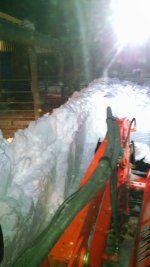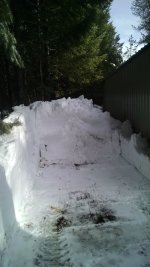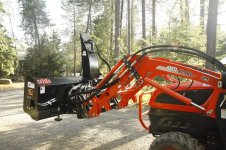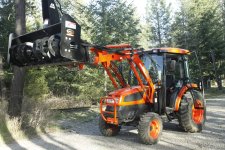Chaostamer
Bronze Member
- Joined
- Jan 28, 2012
- Messages
- 74
- Location
- Viola, ID
- Tractor
- Mahindra 3215 w/ FEL & Kubota M6040 w FEL
Okay - I apologize to those purists and those who have forgotten more than I will ever be able to know about tractors and hydraulics. But I am a novice, so much so that I have come up with little information to help me after 3 hours of searching. In other words, I don't even know enough to search effectively.
I am looking for a replacement pto power pack for a FEL hydraulic snowblower. I have a 2010X snowblower that has the folowing info/specs:
Model: 2010 79
Part Number: 900964
Hydraulic Flow: 11-25 GPM
Operating Pressure: 2500-3500 PSI
I run a Kuboth M6070 with 540 rpm pto.
My Cross pump and gear box was built in 1977. The gearbox seems to work okay, but the pump is dying. I am willing to replace the pump and gear box, or just the pump. I am looking for most cost effective.
If I size up from what I have, I am hoping to run the tractor at 1800 to 2000 RPM to hit the required specs so I can travel slower than if I have to run at 2500 rpm (engine).
Any suggestions on products, configurations, sources, etc? All insight and guidance is much appreciated!
I am looking for a replacement pto power pack for a FEL hydraulic snowblower. I have a 2010X snowblower that has the folowing info/specs:
Model: 2010 79
Part Number: 900964
Hydraulic Flow: 11-25 GPM
Operating Pressure: 2500-3500 PSI
I run a Kuboth M6070 with 540 rpm pto.
My Cross pump and gear box was built in 1977. The gearbox seems to work okay, but the pump is dying. I am willing to replace the pump and gear box, or just the pump. I am looking for most cost effective.
If I size up from what I have, I am hoping to run the tractor at 1800 to 2000 RPM to hit the required specs so I can travel slower than if I have to run at 2500 rpm (engine).
Any suggestions on products, configurations, sources, etc? All insight and guidance is much appreciated!




